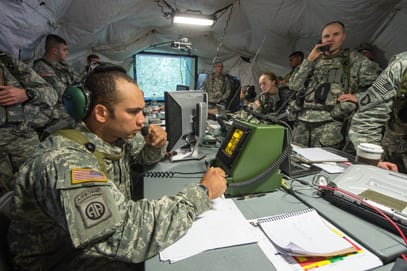

The US federal government’s use of PR to mobilize citizens and galvanize support can be traced to the Revolutionary War. Through the Federalist Papers urging New Yorkers to ratify the proposed constitution with simple messages–“No taxation without representation”– or staging the Boston Tea Party, our founding fathers knew a bit about public opinion.
But it wasn’t until 1917, in response to the country’s entry into World War I that the federal government, under President Woodrow Wilson, created a large-scale propaganda agency–the Committee on Public Information(CPI)–charged with mobilizing public opinion in support of the war.
One of the CPI’s best-known pieces was the image by James Montgomery Flagg depicting Uncle Sam declaring, “I WANT YOU FOR U.S. ARMY!”
The Gillett Amendment Slows PR
After WWI, the popularity of the CPI waned. Extensive use of propaganda by both the CPI and other warring nations caused public outcry over the fear of government manipulation. This uproar added to the general distrust of government use of PR that began in 1913 with passage of the Gillett Amendment. It stated: “Appropriated funds may not be used to pay a publicity expert unless specifically appropriated for that purpose.”
The Gillett Amendment did not outright ban PR, as many believe. Still, it, along with WWI, was enough to cause Washington to back away from the term PR and instead employ less offensive titles, such as public information officer and public affairs officer (PAO).
Military Creates PR Units
During the early 1940s and through World War II, military divisions were created with the express purpose of dealing with the media and creating campaigns to build cohesive relationships with domestic and international audiences.
For example, in 1941, the Marine Corps Public Affairs Division was created. Colonel Robert Denig, a decorated WWI veteran who had retired after 36 years of service, was recalled to active duty and given charge of the new division.
Denig recognized the need for the Marine Corps to have correspondents on the scene, so he set about recruiting 10 experienced journalists from major newspapers.
US Navy Public Affairs also traces its beginnings to WWII. The Navy recruited journalists, PR pros and photographers who were given Naval Reserve line officer commissions and released from active duty after the war.
Between 1946 and 1947, the Navy selected 48 officers to be designated as public information specialists. Ten of the 48 declined, two more were chosen to bring the total to 40.
Since then, the number of service members now called public affairs officers (PAO) is approximately 300.
The Army also was heavily involved in public affairs during WWII. Army Chief of Staff General George Marshall spearheaded one of the most ambitious communication projects. He commissioned Frank Capra with producing seven hour-length films, collectively called “Why We Fight.” The films were released between 1942 and 1945 and helped spur support for the war and Allied forces.
PR Goes Hollywood
Capra, a major in the Army, already was a successful director, with credits that included “It Happened One Night,” and “Mr. Smith Goes to Washington.”
The importance of the PAO has increased exponentially in the years since WWII. Today’s successful PAO must find new and innovative ways to enhance military morale and readiness. At the same time, the PAO is charged with building public trust and understanding, on a global scale, of military operations and contributions to national security.
For an in-depth look at the history of military public affairs, join the Museum of Public Relations, Mon., Oct. 26, 6-7pm ET, for a panel discussion, Military Public Affairs, Past and Present: The U.S. Navy, featuring the Navy’s Chief of Information (CHINFO), Rear Admiral Charles Brown, APR+M, and retired CHINFOs: Rear Admiral Frank Thorp IV and Rear Admiral Kendell Pease. The moderator is Carl Redding, APR+M, retired PAO, communications director, and Director of Public Affairs, Marine Corps.
Contact: [email protected]
